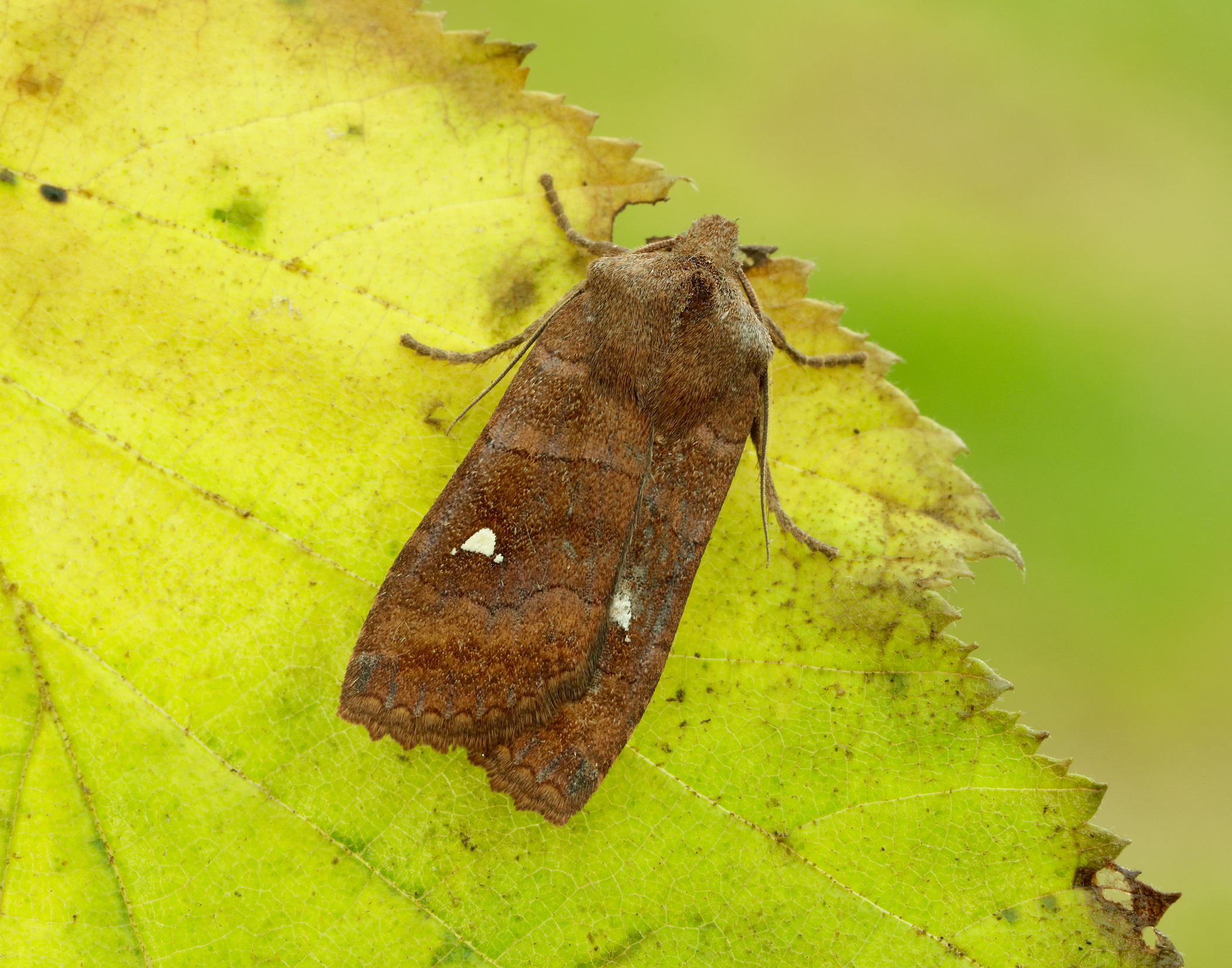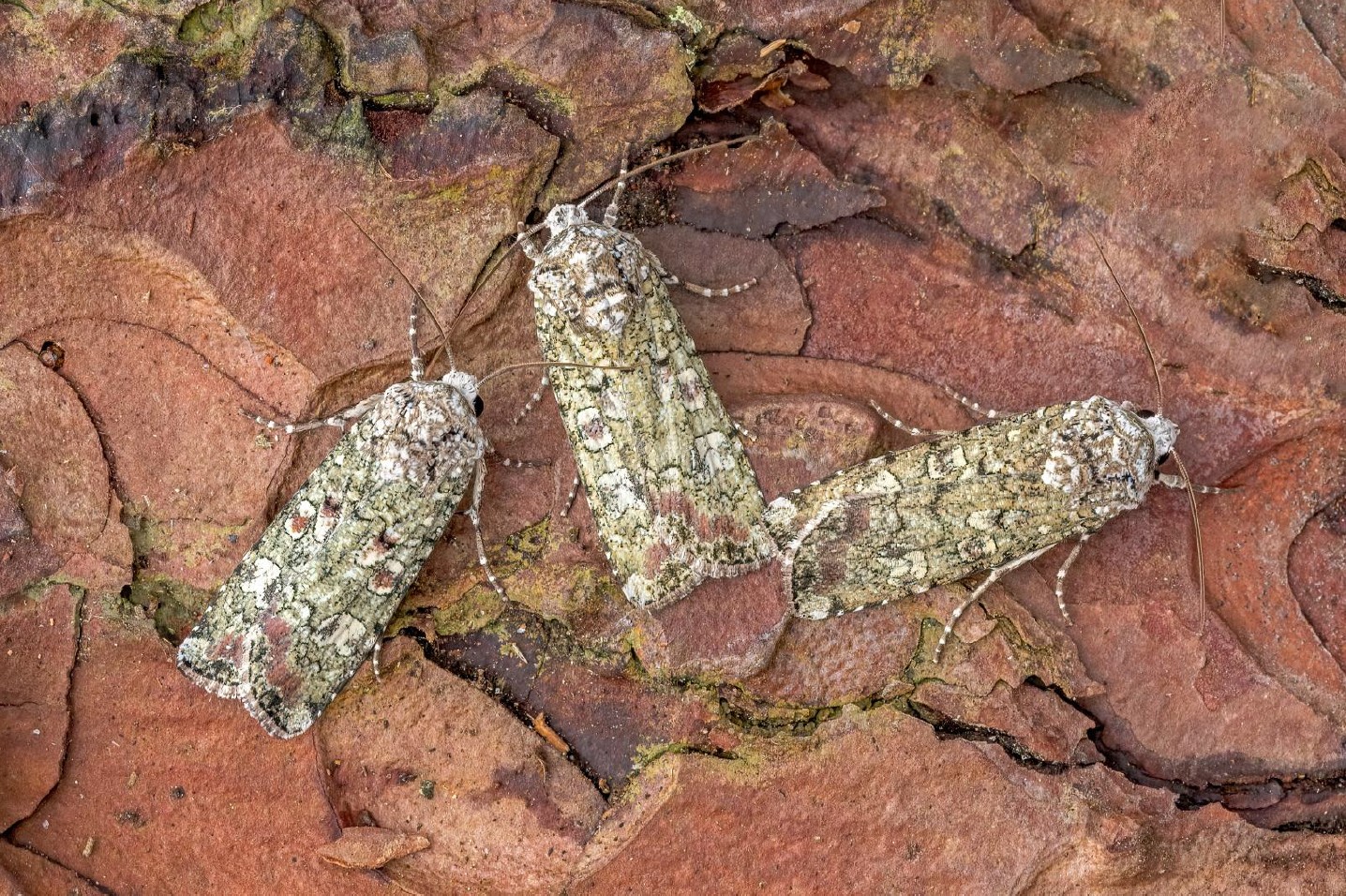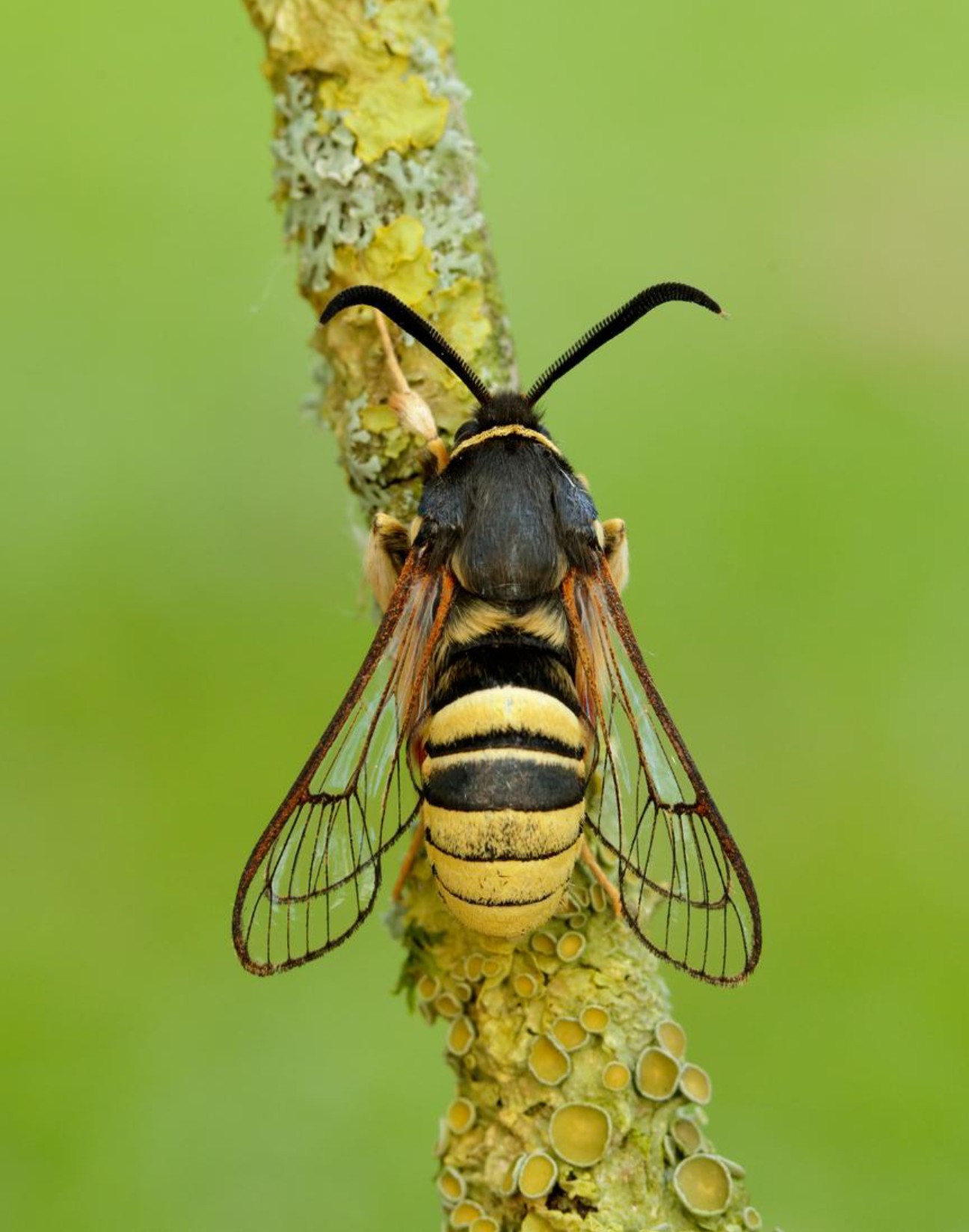Every moth trap in D&G set at this time of year will have an Early Grey in it at some time, rarely more than one. The records show that many of these moths are also found during the day on walls and tree trunks or seen feeding on sallow catkins at night. With almost 500 records for D&G this is quite a common moth being widespread across the three vice-counties mainly in the lightly wooded valleys. It is widespread in England and Wales but in Scotland it is almost absent from the eastern Borders, Aberdeenshire and the far north and islands. It is most abundant here and in the Central Belt.
The moth begins to emerge in March and reaches its peak in the middle weeks of April before rapidly falling off in May. The adult moths are frequent visitors to sallow catkins and the females lay their eggs singly on honeysuckle which is a very widespread plant of woods, hedgerows and gardens. The caterpillar is light-brown with a brown-centred yellowish dorsal line and a dark brown spiracular stripe. There is a slight hump at the tail end and dark marks on the seventh and eighth segments. The camouflaged caterpillar lies along the stem of honeysuckle during the day and feeds at night. Once fully grown in June the caterpillar pupates in a rigid cocoon beneath the soil to overwinter.
There is evidence that this moth is declining over the UK as a whole but possibly spreading in the Central Belt of Scotland.





